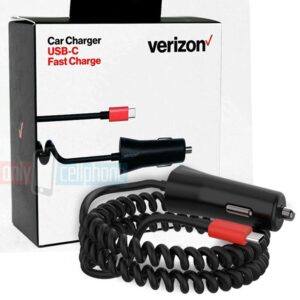Looking to keep your vehicle’s battery charged and ready to go at all times? Wondering how to use the Schumacher battery charger/engine starter effectively? Look no further! In this article, we’ll guide you through the simple steps to use the Schumacher battery charger/engine starter, so you can easily take control of your vehicle’s power needs. Whether you’re a DIY enthusiast or just a regular car owner, mastering the art of using a battery charger is an essential skill. Let’s dive into the details of how to use the Schumacher battery charger/engine starter and ensure your vehicle always starts smoothly.
How to Use a Schumacher Battery Charger/Engine Starter
When it comes to maintaining and charging your vehicle’s battery, having a reliable and efficient battery charger/engine starter is essential. The Schumacher battery charger/engine starter is a popular choice among car owners due to its durability and ease of use. In this comprehensive guide, we will walk you through the step-by-step process of using a Schumacher battery charger/engine starter to ensure that you can keep your vehicle’s battery in top condition.
1. Familiarize Yourself with the Charger
Before you start using the Schumacher battery charger/engine starter, it’s important to familiarize yourself with its components and features. The charger generally consists of the following:
- Battery Clamps: These are the red and black clamps that connect to the positive and negative terminals of the battery.
- Control Panel: This panel contains the various controls and indicators, such as the charging mode selector, ammeter, and voltage selector.
- Power Cord: This cord should be connected to a standard power outlet to provide electricity to the charger.
- Jumper Cables: The jumper cables are used when jump-starting a vehicle.
Key Features of a Schumacher Battery Charger/Engine Starter
The Schumacher battery charger/engine starter typically comes equipped with several key features, including:
- Multiple Charging Modes: These modes allow you to select the appropriate charging setting for your battery type.
- Built-in Safety Features: The charger is designed with safety features such as reverse polarity protection and short circuit protection.
- Battery Tester: Some models even include a built-in battery tester to assess the condition of your battery.
2. Choose the Correct Charging Mode
Once you are familiar with the charger’s components and features, the next step is to select the correct charging mode for your battery. The charging mode selector on the control panel allows you to choose between different charging modes, such as:
- Standard Charging: This mode is suitable for charging lead-acid batteries, which are commonly found in most vehicles.
- AGM Charging: AGM (Absorbent Glass Mat) batteries require a specific charging mode for optimal performance.
- Gel Charging: Gel batteries, often used in applications like motorcycles and ATVs, also have their own charging mode.
Consult Your Battery’s Specifications
It’s important to consult your vehicle’s user manual or the battery manufacturer’s specifications to determine the appropriate charging mode. Using the wrong mode can damage the battery, so ensure that you have the correct information before proceeding.
3. Connect the Battery Clamps
Before connecting the battery clamps, make sure that both the charger and the vehicle’s engine are turned off. Follow these steps to connect the battery clamps:
- Identify the Battery Terminals: Locate the positive and negative terminals on the battery. The positive terminal is usually marked with a “+” symbol, while the negative terminal is marked with a “-” symbol.
- Attach the Red Clamp: Connect the red clamp to the positive terminal of the battery. Ensure a secure connection.
- Attach the Black Clamp: Connect the black clamp to the negative terminal of the battery.
Note: It’s important to connect the clamps in the correct order to prevent any electrical hazards. Always connect the positive clamp first and then the negative clamp.
4. Set the Charging Parameters
After connecting the battery clamps, you need to set the appropriate charging parameters on the charger. The exact steps may vary depending on the model you have, but the general process is as follows:
- Select the Voltage: If your charger has a voltage selector, set it to the voltage that matches your battery, usually 12 volts for most vehicles.
- Set the Charging Rate: Depending on the condition of your battery and the charging mode selected, you can typically choose between different charging rates. A higher charging rate will charge the battery faster, while a lower rate will provide a more gentle charge.
5. Start the Charging Process
Once you have set the charging parameters, it’s time to start the charging process. Follow these steps:
- Turn On the Charger: Switch on the charger using the power button or switch located on the control panel.
- Monitor the Charging Process: Keep an eye on the ammeter or any other indicators provided on the control panel. The ammeter will show the charging current, which will gradually decrease as the battery charges.
- Wait for the Battery to Reach Full Charge: The charging time will vary depending on the battery’s condition and the charging rate you have selected. It’s important not to overcharge the battery, so keep an eye on the charging progress and disconnect the charger once the battery reaches full charge.
6. Disconnect the Battery Clamps
After the battery has reached full charge, it’s time to disconnect the battery clamps. Follow these steps:
- Turn Off the Charger: Switch off the charger using the power button or switch.
- Remove the Black Clamp: Disconnect the black clamp from the negative terminal of the battery.
- Remove the Red Clamp: Disconnect the red clamp from the positive terminal of the battery.
7. Safety Precautions and Tips
When using a Schumacher battery charger/engine starter, it’s important to keep the following safety precautions in mind:
- Read the manufacturer’s instructions and safety guidelines before using the charger.
- Ensure that the charger is placed on a stable surface and away from flammable materials.
- Never touch the clamps or exposed metal parts while the charger is connected to a power source or the battery.
- Avoid connecting the clamps directly to the vehicle’s electronic components to prevent damage.
- Regularly inspect the charger for any signs of damage or wear. Do not use a damaged charger.
By following these steps and safety precautions, you can confidently use a Schumacher battery charger/engine starter to keep your vehicle’s battery charged and in optimal condition. Remember to always consult the charger’s manual for specific instructions related to your model and enjoy the benefits of a reliable and efficient battery charging solution!
Frequently Asked Questions
How do I connect the Schumacher battery charger/engine starter to my vehicle’s battery?
To connect the Schumacher battery charger/engine starter to your vehicle’s battery, follow these steps:
1. Make sure both the battery charger and your vehicle are turned off.
2. Locate the positive (+) and negative (-) terminals on your vehicle’s battery.
3. Connect the red clamp from the charger to the positive terminal of the battery.
4. Connect the black clamp from the charger to the negative terminal of the battery.
5. Ensure that the clamps are securely attached to the battery terminals.
6. Once you have made the connections, you can turn on the charger or engine starter to begin the charging process.
How long does it take to fully charge a battery using the Schumacher charger?
The charging time may vary depending on the state of your battery, but as a general guideline, it typically takes several hours to fully charge a battery using the Schumacher charger. It is recommended to refer to the charger’s user manual for specific charging times and instructions.
Can I leave the Schumacher battery charger/engine starter connected to the battery overnight?
It is not advised to leave the Schumacher battery charger/engine starter connected to the battery overnight, especially if the charging process is complete. Overcharging the battery can potentially damage it or reduce its lifespan. It is recommended to monitor the charging process and disconnect the charger once the battery is fully charged.
Can the Schumacher battery charger/engine starter be used on different types of batteries?
Yes, the Schumacher battery charger/engine starter is designed to be compatible with different types of batteries, including lead-acid, AGM, and gel batteries. However, it is important to refer to the charger’s user manual to ensure proper settings and charging procedures for the specific type of battery you are using.
What safety precautions should I take when using the Schumacher battery charger/engine starter?
When using the Schumacher battery charger/engine starter, it is important to follow these safety precautions:
1. Read and understand the charger’s user manual before use.
2. Ensure that the charger is compatible with your battery type.
3. Make sure both the charger and your vehicle are turned off before making any connections.
4. Wear protective gloves and eye goggles to prevent any potential accidents.
5. Keep the charger away from any flammable materials.
6. Do not touch the clamps while the charger is connected to the battery.
7. Disconnect the charger from the battery once the charging process is complete.
By following these precautions, you can safely use the Schumacher battery charger/engine starter.
Final Thoughts
To use the Schumacher battery charger/engine starter, start by properly connecting the charger to the battery, ensuring that the polarity is correct and the clamps are securely attached. Then, select the appropriate charging mode based on your specific needs and the type of battery being charged. Next, set the charging rate to match the battery’s recommended charging rate. Once everything is set, you can initiate the charging process by turning on the charger. Monitor the charging progress and disconnect the charger once the battery is fully charged. Always follow the manufacturer’s instructions for safe and effective use. With the Schumacher battery charger/engine starter, you can easily maintain and rejuvenate your batteries without any hassle.



